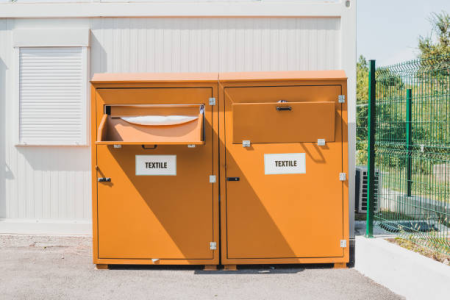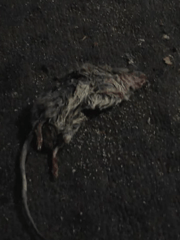The shocking danger hiding in clothing donation drop boxes—what happened to one Florida woman will make you think twice
By
Gian T
- Replies 0
Most of us have dropped off a bag of old clothes at a charity donation bin, feeling good about decluttering and helping someone in need. But behind these everyday acts of kindness, there’s a hidden danger that’s claimed more lives than you might expect, turning a simple act of charity into a potential tragedy.
Recently, a heartbreaking incident in Plantation, Florida, has brought this issue into the spotlight once again. Early one Friday morning, a woman was found dead, half inside a pink clothing donation bin on West Federated Roadway. An employee at the nearby Children’s Learning Centre made the grim discovery as she arrived for work and immediately called emergency services. Sadly, by the time police arrived, it was too late.
Authorities believe the woman, who was homeless, had been trying to retrieve clothes and shoes from the bin when she became trapped and suffocated. The self-closing, security-focused design of these bins, meant to protect donations, can become a deadly hazard for anyone who gets stuck inside. Police are still working to identify the woman and notify her family, while the medical examiner will determine the exact cause of death.
Unfortunately, this isn’t an isolated incident. Across the United States and Canada, dozens of people have died in similar circumstances over the past decade. From 2007 to 2019, more than 20 people lost their lives after becoming trapped in charity bins. The victims are often vulnerable members of the community—homeless individuals seeking warmth, clothing, or shelter, or even well-meaning donors who accidentally drop something valuable and try to retrieve it.
The design of these bins is at the heart of the problem. Most feature a hatch that opens with a handle and then closes automatically, making it difficult—sometimes impossible—to escape if you become stuck. In some tragic cases, people have become wedged halfway in, unable to breathe or move, leading to suffocation or fatal pressure on the chest. Others, trapped upside down, have died from strokes or heart attacks as blood pools in their heads.
One particularly harrowing case occurred in Pennsylvania in 2017. Judith Permar, 52, was donating clothes at 2 am, standing on a stool to reach the hatch. When the stool toppled, she was left dangling with her arm trapped inside the bin. She broke her arm and wrist and, unable to free herself, died of hypothermia after six hours exposed to the cold.
Another case in California saw Kaily Land, a homeless woman, die after falling headfirst into a bin. Her mother later sued the manufacturer and operator, arguing that they should have known about the dangers, given the number of similar incidents across North America.
Experts have called for urgent changes to bin design. University of British Columbia engineering professor Ray Taheri has labelled these bins 'death traps,' suggesting that the openings should be made too small for a person to fit through, or that safety features like motion detectors or emergency release handles should be installed.
So, what can be done to prevent these tragedies? Here are a few ideas and talking points:
Rethinking Bin Design: Manufacturers and charities could work together to redesign bins with safety in mind. Smaller openings, internal sensors, and emergency release mechanisms could save lives.
Raising Awareness: Many people don’t realise the risks associated with donation bins. Public education campaigns could help spread the word, especially among vulnerable groups.
Supporting the Homeless: Incidents like these highlight the desperate situations faced by people experiencing homelessness. More accessible support services, shelters, and clothing banks could reduce the need for risky behaviour.
Community Involvement: If you notice someone in distress near a donation bin, don’t hesitate to call for help. A quick response can make all the difference.
Reviewing Local Bins: Councils and charities could audit existing bins to identify and modify or remove those that pose the greatest risk.
At the end of the day, charity bins are meant to help those in need, not endanger them. As a community, we can push for safer solutions and look out for one another.

.
Have you ever had a close call with a donation bin, or do you have ideas for making them safer? Do you think more should be done to support people experiencing homelessness? We’d love to hear your thoughts and experiences in the comments below. Let’s keep the conversation going and work together to make our communities safer for everyone.
Read more: Woman calls police on herself during car theft attempt
Recently, a heartbreaking incident in Plantation, Florida, has brought this issue into the spotlight once again. Early one Friday morning, a woman was found dead, half inside a pink clothing donation bin on West Federated Roadway. An employee at the nearby Children’s Learning Centre made the grim discovery as she arrived for work and immediately called emergency services. Sadly, by the time police arrived, it was too late.
Authorities believe the woman, who was homeless, had been trying to retrieve clothes and shoes from the bin when she became trapped and suffocated. The self-closing, security-focused design of these bins, meant to protect donations, can become a deadly hazard for anyone who gets stuck inside. Police are still working to identify the woman and notify her family, while the medical examiner will determine the exact cause of death.
Unfortunately, this isn’t an isolated incident. Across the United States and Canada, dozens of people have died in similar circumstances over the past decade. From 2007 to 2019, more than 20 people lost their lives after becoming trapped in charity bins. The victims are often vulnerable members of the community—homeless individuals seeking warmth, clothing, or shelter, or even well-meaning donors who accidentally drop something valuable and try to retrieve it.
The design of these bins is at the heart of the problem. Most feature a hatch that opens with a handle and then closes automatically, making it difficult—sometimes impossible—to escape if you become stuck. In some tragic cases, people have become wedged halfway in, unable to breathe or move, leading to suffocation or fatal pressure on the chest. Others, trapped upside down, have died from strokes or heart attacks as blood pools in their heads.
One particularly harrowing case occurred in Pennsylvania in 2017. Judith Permar, 52, was donating clothes at 2 am, standing on a stool to reach the hatch. When the stool toppled, she was left dangling with her arm trapped inside the bin. She broke her arm and wrist and, unable to free herself, died of hypothermia after six hours exposed to the cold.
Another case in California saw Kaily Land, a homeless woman, die after falling headfirst into a bin. Her mother later sued the manufacturer and operator, arguing that they should have known about the dangers, given the number of similar incidents across North America.
Experts have called for urgent changes to bin design. University of British Columbia engineering professor Ray Taheri has labelled these bins 'death traps,' suggesting that the openings should be made too small for a person to fit through, or that safety features like motion detectors or emergency release handles should be installed.
So, what can be done to prevent these tragedies? Here are a few ideas and talking points:
Rethinking Bin Design: Manufacturers and charities could work together to redesign bins with safety in mind. Smaller openings, internal sensors, and emergency release mechanisms could save lives.
Raising Awareness: Many people don’t realise the risks associated with donation bins. Public education campaigns could help spread the word, especially among vulnerable groups.
Supporting the Homeless: Incidents like these highlight the desperate situations faced by people experiencing homelessness. More accessible support services, shelters, and clothing banks could reduce the need for risky behaviour.
Community Involvement: If you notice someone in distress near a donation bin, don’t hesitate to call for help. A quick response can make all the difference.
Reviewing Local Bins: Councils and charities could audit existing bins to identify and modify or remove those that pose the greatest risk.
At the end of the day, charity bins are meant to help those in need, not endanger them. As a community, we can push for safer solutions and look out for one another.
Key Takeaways
- A homeless woman in Florida suffocated after getting stuck while trying to retrieve clothes from a charity donation bin, with police treating the incident as a tragic accident.
- Deaths in charity donation bins are not uncommon in the US and Canada, with over 20 reported between 2007 and 2019, typically due to suffocation or other medical emergencies after people become trapped.
- The bins’ design, featuring self-closing hatches for security, can trap people either attempting to retrieve items or seeking shelter, prompting concerns they may be 'death traps'.
- Experts and grieving families have called for improved safety measures, such as smaller openings, motion detectors, or emergency releases, to prevent further tragedies.
Have you ever had a close call with a donation bin, or do you have ideas for making them safer? Do you think more should be done to support people experiencing homelessness? We’d love to hear your thoughts and experiences in the comments below. Let’s keep the conversation going and work together to make our communities safer for everyone.
Read more: Woman calls police on herself during car theft attempt








